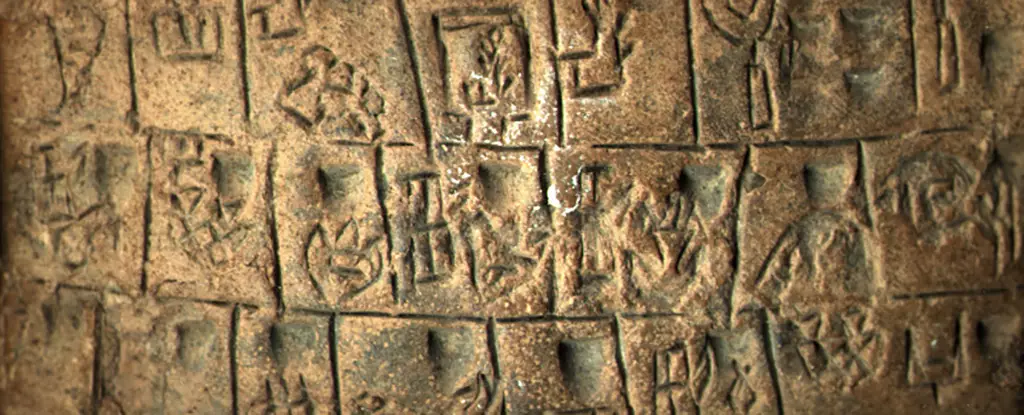Human beings have long been interpreters and communicators of the world around them, a trait that has manifested in many forms throughout our history. While oral traditions helped pass down knowledge from generation to generation, the advent of writing marked a transformative leap in human expression. Researchers from the University of Bologna have made a significant discovery that highlights the intrinsic connection between ancient artistic seals and the nascent form of writing known as proto-cuneiform. This exploration raises fundamental questions about the very essence of communication, challenging us to consider how primitive visual languages informed the complex systems of writing we recognize today.
The investigation led by philologist Silvia Ferrara zeroes in on the intricate designs found on ancient cylinder seals dating back to pre-literate Mesopotamia. These seals served not only as artistic representations but also as practical tools for recording transactions and events. The researchers meticulously compared the imagery on these seals with known proto-cuneiform symbols, which emerged during an era characterized by the development of the first rudimentary writing systems. Their findings suggest that the patterns and symbols depicted on these seals might have been instrumental in laying the groundwork for the alphabetic and ideographic systems that followed.
One striking example arises from the depiction of various textile designs and artifacts on these seals. The researchers observed that the form of fringed materials on the seals closely resembles proto-cuneiform signs, revealing a remarkable consistency in how these concepts were visually represented. Similarly, representations of people weaving are aligned with the early symbols that denoted weaving in proto-cuneiform. This synchronicity hints at a rich interaction between visual art and emerging forms of literacy, suggesting that images may have served as cognitive prompts enabling early humans to transition from simple depiction to abstract representation.
The study illuminates a pivotal cognitive evolution in human history—namely, the shift from rudimentary visual symbols to more formalized writing systems. As Ferrara posits, “The conceptual leap from pre-writing symbolism to writing is a significant development in human cognitive technologies.” This assertion highlights the significance of visual communication as a precursor to the structured systems that would eventually codify language and thought.
Writing didn’t only change the mode of communication; it reshaped how societies functioned, enabling the documentation of laws, trade, and culture. The publication of records became integral for commerce, governance, and the very fabric of social interaction. The cylinder seals acted as functional touchstones for tracking goods and services, serving as a precursor to the formalized accounting that would arise with proto-cuneiform. This connection presents an intriguing perspective on how the need for transaction records could have spurred humanity’s desire to create a method for structured communication.
As the research team unfolded their analysis, it became increasingly evident that ancient cylinder seals did not merely reflect human experience but also played a vital role in the legacy of record-keeping. Before the adoption of writing, these seals encapsulated the function of documentation, allowing individuals and communities to ‘print’ their transactions into clay tablets. This process, though not yet formal writing, contained the seeds of literacy that would later blossom into a sophisticated system of communication.
Ultimately, the findings of this research bridge the divide between prehistory and the dawn of written history. This archaeological inquiry reveals the intricate tapestries woven by time, where visual art and early writing concepts coalesced into a formidable means of communication. As humanity reflects on its journey towards articulate expression, these links between different forms of communication underscore the deep-rooted desire to transcend mere existence through language and symbol.
The collaborative efforts at the University of Bologna provide invaluable insights into the evolution of human communication. By traversing the territory between the prehistoric use of symbolic imagery and the innovation of writing systems, this study reinforces the idea that the paths of artistry and literary development are intertwined. The cylinder seals of ancient Mesopotamia did more than simply depict life; they were catalysts for writing, marking the dawn of a new era of communication—a testament to our ceaseless quest to convey meaning through language. As we delve deeper into our historical narratives, understanding these connections enriches our appreciation of the complexities of human communication and culture.


Leave a Reply